

A green light blinks on in the instrument cluster of the Mitsubishi Shogun Pinin to indicate that the engine is running in "ECO" mode, which means under stratified charge operation. To many customers, this may look like a gimmick. However, if the timing of the light is actually accurate, the junior SUV runs in this mode for an impressive amount of driving time.
You may well be wondering what 'stratified charge' operation is. The first clue is the other badging on the car - Mitsubishi's tag "GDI" stands for Gasoline Direct Injection. As you may have guessed, the fuel is injected directly into the engine's cylinders, rather than into the inlet manifold (as with traditional fuel injection). Most engine makers are investigating this technology to aid a desired reduction in fuel consumption and emissions. There are two main modes of operation for a DI (I will refer to the technology as Direct Injection as Mitsubishi have copyrighted the GDI tag) - homogeneous and stratified charge. The first is not very different to operation with a carburettor or ordinary fuel injection, where the air and fuel are well mixed in the cylinder before combustion. DI does give the potential for increased power though under homogeneous operation (over PFI - port fuel injection).
Stratified charge is more complicated to operate reliably in an engine as it involves keeping the air and fuel apart to a certain extent. In essence, the idea is to control the work output by the amount of fuel injected (not by adjusting the throttle, which reduces the engine's efficiency). Therefore, the overall air/fuel ratio in the cylinder varies substantially, but it is layered so that there is a fuel-rich mixture at the spark plug at the time of combustion. If controlled well, this method has the potential for a large reduction in the fuel used. However, it generally has limits in terms of engine speed and load, in which case the engine is reverted to homogeneous operation.
So, returning to the Pinin itself, there does appear to be an impressive range of operation for the stratified charge mode. However, it is not amazingly fuel-efficient, well, not in our testers' hands... Saying that, up to 35mpg is not terrible for a car with very square styling and the weight of a full four-wheel drive system on board. As important to a consumer is the lack of any obvious step between the two modes. There is none thankfully. Saying that, the refinement of the car as a whole is not too impressive. There is a lot of movement and vibration through the gearlever itself, and many clonks from the driveline. You might expect this in a mid-price off-roader, but the Pinin is being marketed as a stylish car about town as well, with much being said about Pininfarina's styling input. Surprisingly, the 4wd system is not your average part-time offering - good for the odd puddle at the side of the road. A low speed transfer 'box is included to complement the mud-plugging tyres.
Inevitably, an off-road chassis will be compromised when sticking to the main road. There is lots of body roll in corners and roundabouts, though by powering out of corners, this can be alleviated. Thankfully, the chassis will not catch you out in the dry. However, wet roads can lead to the rear end stepping out of line in tight corners if you are a little over ambitious in two-wheel drive mode. It should not happen too often though as throttle response itself is quite poor. It is likely that the throttle pedal is not actually connected to the throttle, but instead controlled by the engine calibration. Though the Pinin is not exactly athletic in its performance, it moves along respectably when asked, and the height advantage helps with overtaking manoeuvres.
The version tested by The Car Enthusiast was the five-door. Now, I know that cars are growing to incorporate safety and creature-comfort features, but the Shogun Pinin cannot really be called a small car, unless compared to its huge brother the Shogun of course. Inside, there is plenty of room, front and back. The controls are all light and easy to use, though the stereo has too many buttons. The satellite navigation fitted to the test car works well and is simple to use while on the move. The seats feel a tad soft on first acquaintance, but manage to stay comfortable over long distances. The only real letdown inside is the angle of the steering wheel, which serves to remind you that this is not a regular car.
Buyers of the Mitsubishi Shogun Pinin will be expecting a car for all seasons, especially the 5-door version, which is practically an MPV as well as an SUV. The Toyota RAV 4 appears to be the only serious competitor to the car in the UK market, but that appears to be biased even more towards road use. In summary, do we think that the Pinin's talents are multi-layered (like its advanced combustion system)? Yes we do. It gets the green light from us…
www.mitsubishi-cars.co.uk
Road test: 2002 Mitsubishi Shogun Pinin 2.0 GDI Equippe (5 door)
Story by Shane O' Donoghue, images by Mark Sims
|

|
|
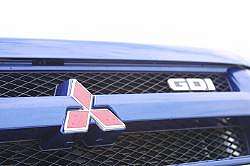
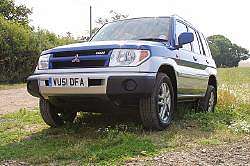
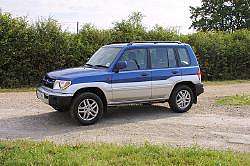
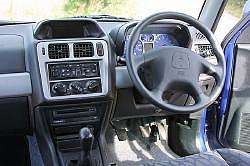
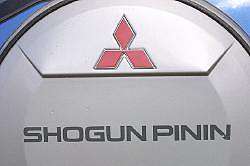
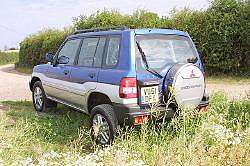
|





